Eight hands. Four leaders. Two states. One night.
That was what it took to remind us once again of the nitty-gritty of sustainability in the foodservice industry. However you look at it, the organic coming together of these four industry veterans from both sides of the West Philippine Sea says a lot about how sustainability has been thoroughly adopted as both a concept that stands on its own and a companion piece to any culinary figure’s career.
“We brought them together because they really are the industry heavyweights in the space of sustainable dining,” says Fang Xun Ong, Singapore Tourism Board’s Philippines area director. And it’s true, as each of them are masters of their craft.
The masters of sustainability from Manila and Singapore
LG Han of one Michelin-starred Labyrinth has long been bullish about sustainability despite all the geographical challenges the Lion City faces. “We are proud to say that anywhere from 60 to 90 percent of the ingredients used in our dishes come from within Singapore,” says the former banker.
“We brought them together because they really are the industry heavyweights in the space of sustainable dining,” says Fang Xun Ong, Singapore Tourism Board’s Philippines area director. And it’s true, as each of them are masters of their craft.
Naturally, his local produce advocacy and efforts to engage with farmers and fisherfolk haven’t gone unnoticed, as he earned the Flor De Caña Sustainable Restaurant Award at Asia’s 50 Best Restaurants 2021.
Sustainability also manifests itself in Singapore’s bar scene. But in the case of Native co-owner and head bartender Vijay Mudaliar, his ideas take on a more thoughtful approach—where he dreams up cocktails founded on familiar and unusual ingredients (thanks to a kind of urban foraging he pioneered) and “food of the future” like algae and cacti that skews perceptions of overconsumption.
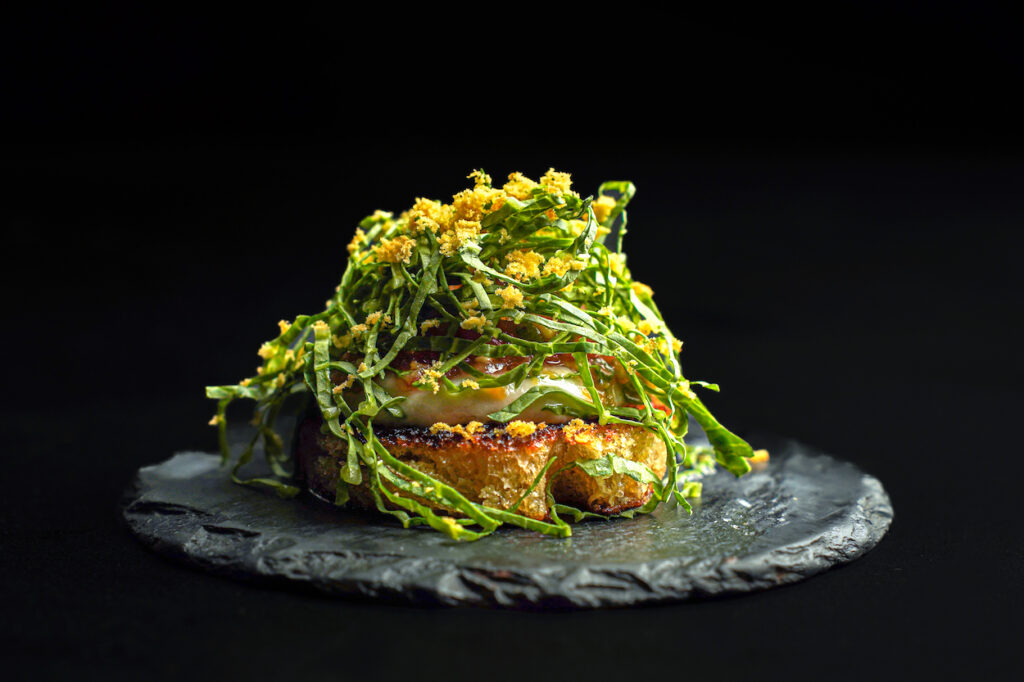

In Manila meanwhile, both Toyo Eatery and Metiz have rounded up a cast of characters that put sustainability at their core since their inception in 2016 and 2019, respectively. Rather than making it into a spectacle, Jordy Navarra and Stephan Duhesme allowed their business models to speak for where they stand in the intersection of sustainability and foodservice.
“Sustainability for us at Toyo Eatery is cultivating the relationships we have with the people that nurture our country,” said Navarra who this year was the recipient of the Flor De Caña Sustainable Restaurant Award for their commitment to minimizing carbon footprint and to sourcing local ingredients.
“Sustainability for us at Toyo Eatery is cultivating the relationships we have with the people that nurture our country,” said Jordy Navarra.
“It’s really finding inspiration in traditions and refining our processes and being more responsible with waste and how we use products, finding creativity through what’s around us.”
In four years, Metiz has also made a name for itself for becoming not just another creative space for Filipino cuisine and produce but also for Duhesme’s endeavors to overhaul how a restaurant is supposed to be run.
“I was disillusioned by sometimes the lack of thought for sustainable processes in restaurants throughout my life and instead of just stopping to work in the industry I decided why not create a restaurant where I want to be working in at all times,” he said. “Because that’s what sustainability is in the end, it’s doing something that you can do for the rest of your life and then passing it on to the future generations.”
At Toyo Eatery, dinner is served
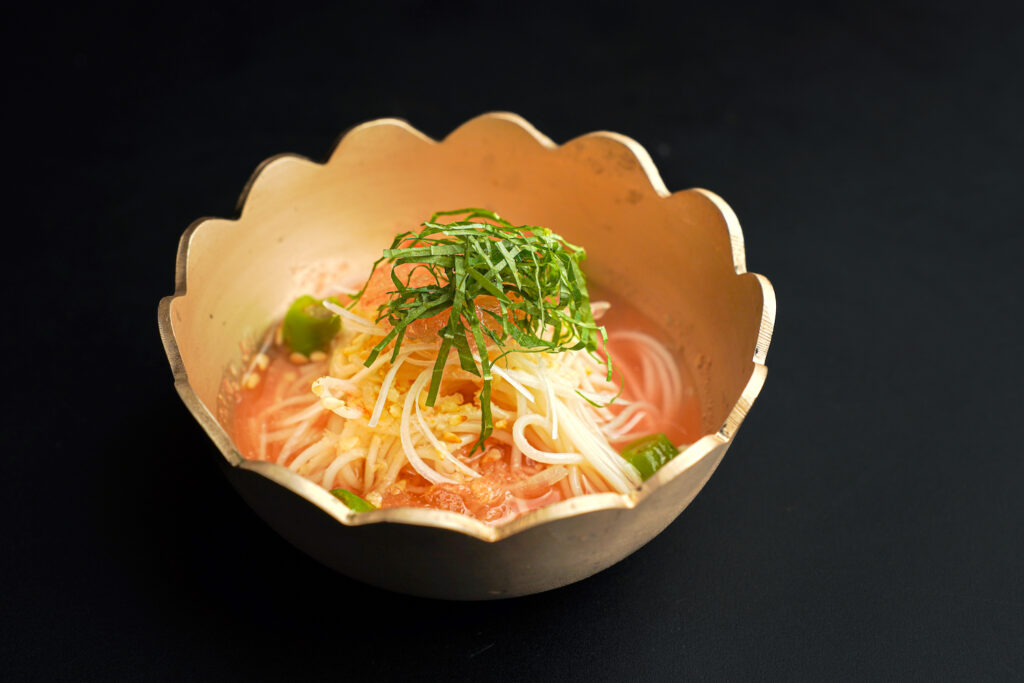
The night was a prime opportunity to celebrate sustainability in all its forms and the profound effects they have on everyone as consumers, but the 10-course dinner is at the heart of it all.
In this collaboration, the approach to food storytelling is punctuated with their signature styles, bitingly beautiful presentations, and an always-happy-to-help troop manning the space that makes you think they are sociable information desks on legs.
These fleet-footed servers clad in their carefree Carl Jan Cruz ensembles are embodiments of the overall sustainability ethos of the brand—their glowing dispositions, butler-like service, and an assumption that balance is bred inside them are tied tightly to the Toyo Eatery trait of a positive work culture.
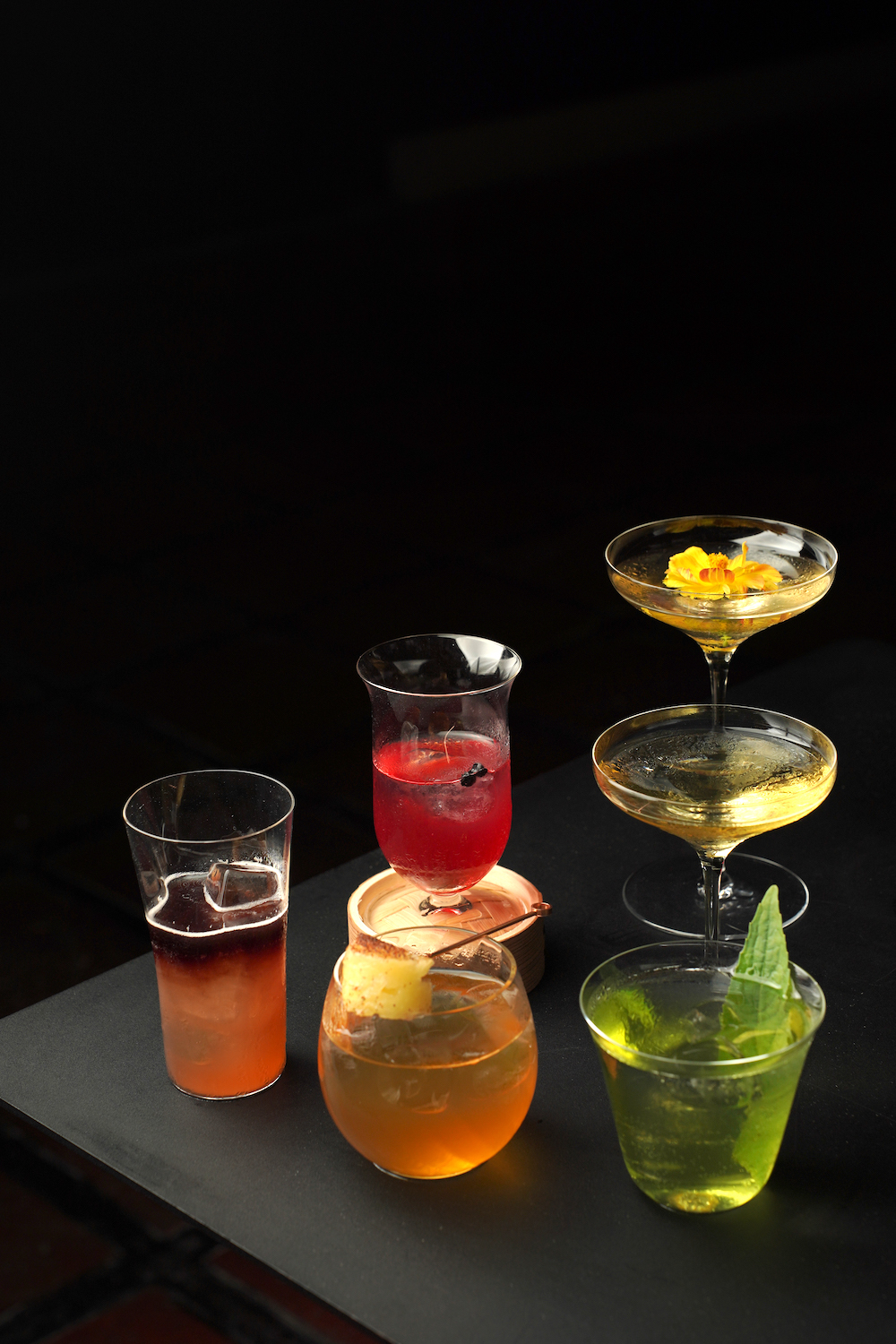
It was as if Jordy and May Navarra doubled up on their commitment to make the night more than just an evanescent spectacle of sustainability. That it has always been central to the country’s best restaurant makes it all the more an absolute sight to behold.
“Everyone takes pride in the fact that they feel like they fit in,” Navarra once said in a 2019 F&B Report interview. “There’s a sense of belongingness.”
That was also apparent in the ease with which Native’s Mudaliar happily went from table to table to explain each of the six drinks that greatly populated my table as well as the length he took to accommodate my teetotalist companion, Nolisoli content creator Andrei Yuvallos, with a non-alcoholic concoction.
The menu’s scope is wide-ranging, melding Toyo Eatery’s Filipino-forward cuisine, Metiz’s portrayals of fermentation, Labyrinthe’s complex “expression of Singapore cuisine,” and Native’s solid lineup of cocktails.
The menu’s scope is wide-ranging, melding Toyo Eatery’s Filipino-forward cuisine, Metiz’s portrayals of fermentation, Labyrinthe’s complex “expression of Singapore cuisine,” and Native’s solid lineup of cocktails.
Set over the course of four hours, the experience begins with a dainty starter spread whose components are as varied as the heads in the refurbished Toyo Eatery kitchen—a fermented black rice siomai wrapped in mustasa with a hint of chili, a tinapayang tanigue, a “fried” ensaymada, and a miang kham with pineapple shoyu from Native. Fueling the sustainable plotline is an effervescent somen with sesame and shisho whose sparkling soup you slurp with each bite.
From there, it gets better when the kitchen strings along three of its culinary peaks. The inihaw na puso ng saging combines hard (caramelized cashew topping) and soft (monggo bean purée) textures, but the seriously delicious fleshy blossom remains the object of adoration here.
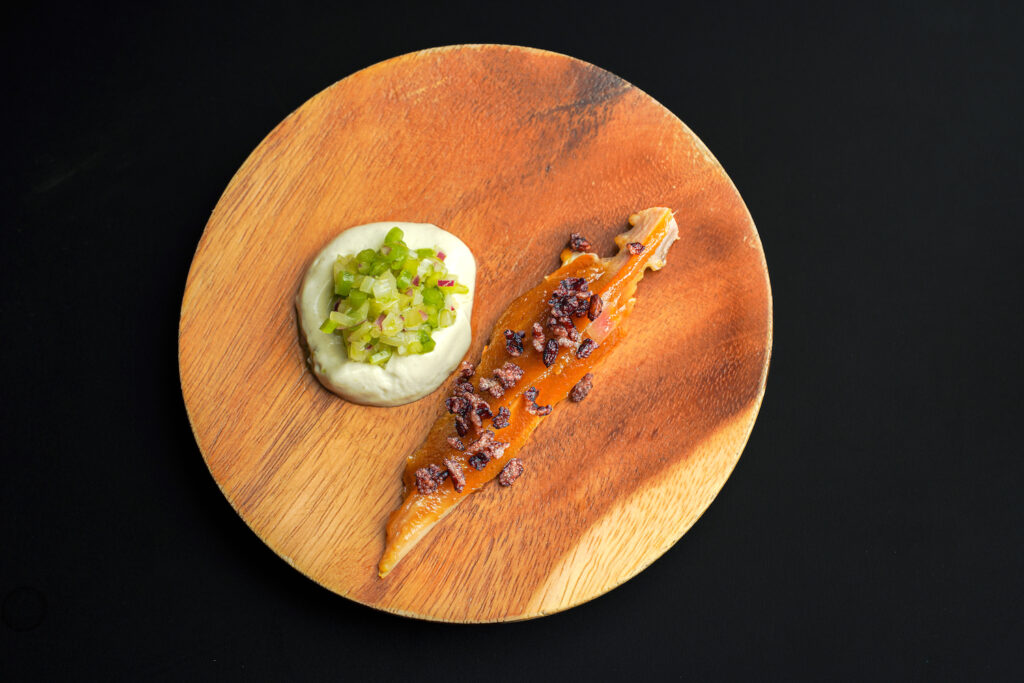
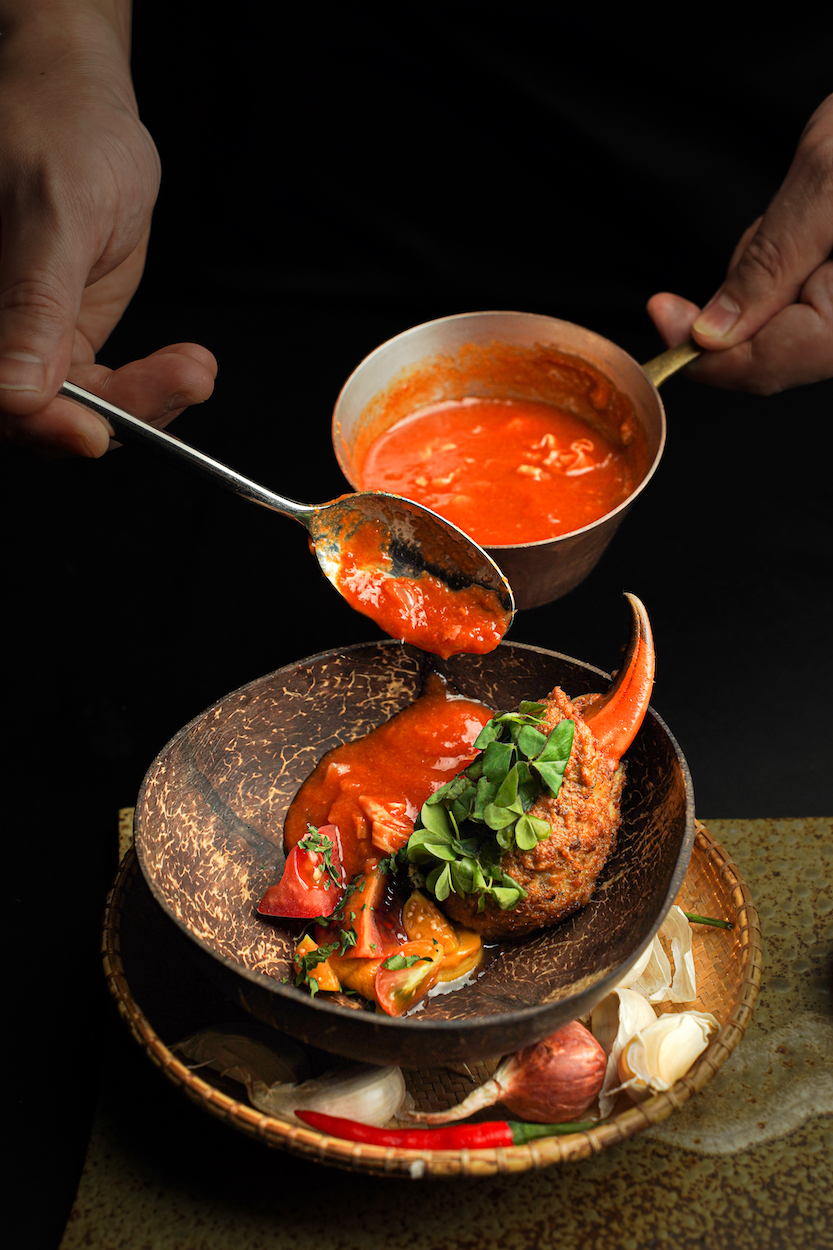
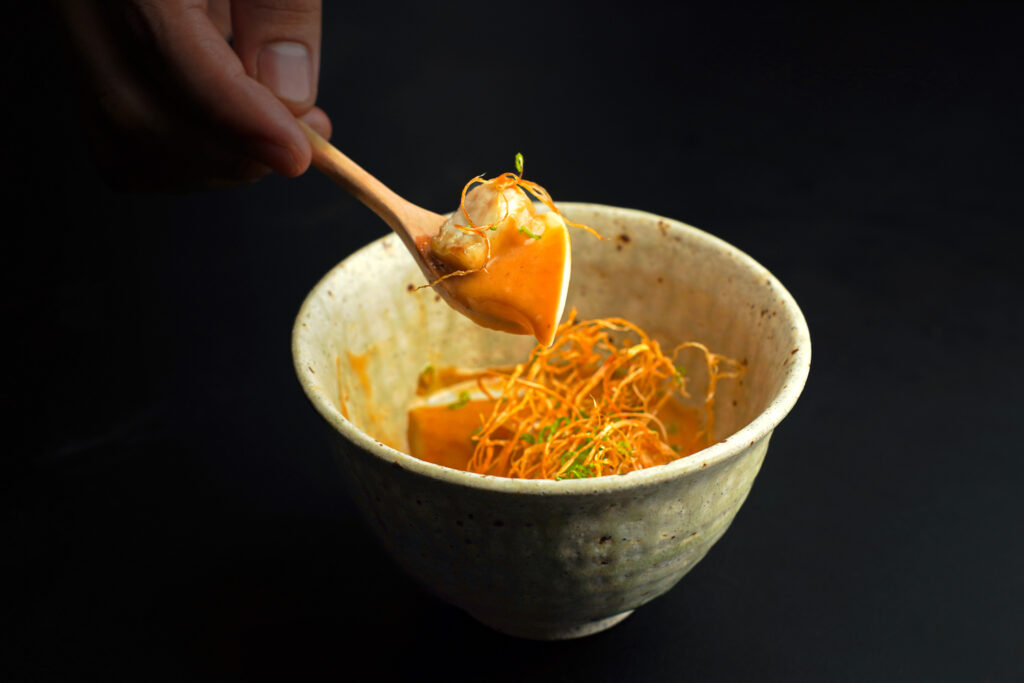
Next is a Central Visayas-inspired bowl with a cacophony of sour elements—kamias, kamatis, and deep-fried kabute sitting on soy milk curd—that taste even better when mixed all together. Meanwhile, Labyrinth’s chili crab bolsters a Singaporean classic with a mud crab mixture, crab fat, and a spicy sauce made with tomatoes, soybean, and salmon skin.
That’s not to say though that the heavyweight of the night is never less than beautiful. The plan, it seems, with the multi-dish spread is to sample the entire body of work honoring the soul of all four of the establishments. And it does make sense when you listen to the details.

The fragrant tinawon chicken rice right next to the massa-mole curry. The cabbage shrimp dish beside the banana catsup. The background roles played by the chili sauce and the belimbing salsa. All of these feel like little vignettes of the larger story arc on sustainability.
Quelling the energy of the previous course are the delicate desserts. First, and one that I particularly liked, is the amazake (a Japanese fermented rice drink) ice cream that gets a subtly sweet kick from the mangoes and dikay leaves depicted in icy forms, and secondly (but the last dessert in my case) is an intriguing shaved ice bowl where you expect unexpected flavor combinations underneath (toasted black rice ice cream, bandung or rose syrup, and edible rosella).
Sustainability with soul
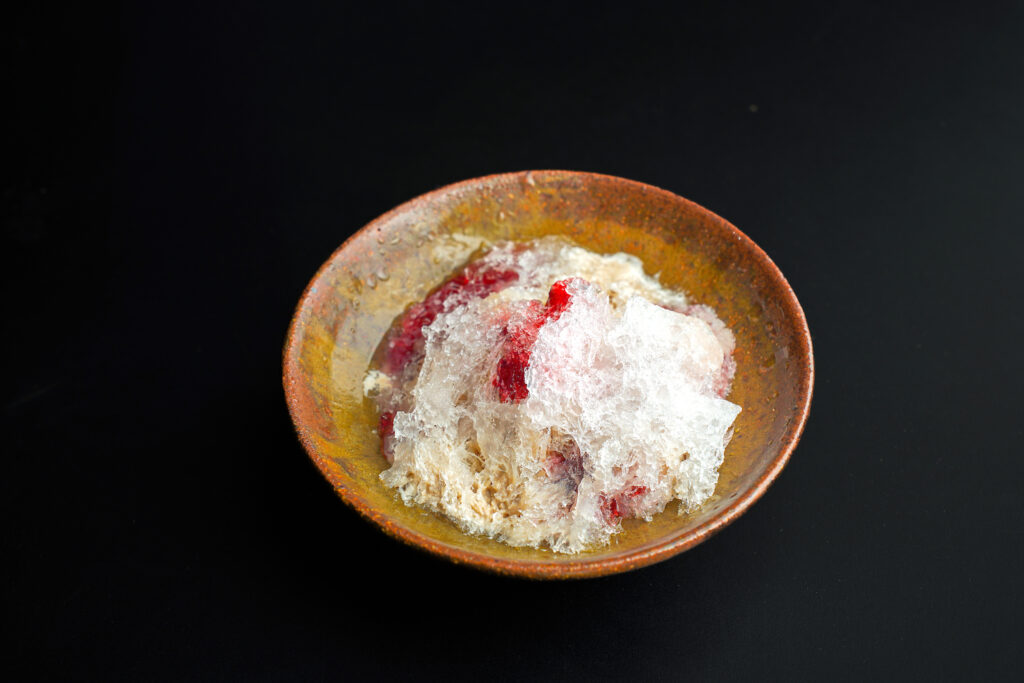
My epicurean night was cut short due to personal circumstances and I missed out on the final set of desserts laced with ube halaya, kaya toast, pandan, and pili nut.
“You’re leaving? You still have more sweets,” said one actual sweetheart of a staff, a sense of bewilderment strewn across his boyish face framed by his signature black beanie, before we both headed outside.
In the end, what they showed was all heart. One that will stay with me for years.
My reluctant farewell was bittersweet, especially on a meaningful evening like this, but in the blanket of the darkness outside Panaderya Toyo and in the quintessential endowing of a parting gift—a takeaway of a malunggay and saba bicho-bicho—this night felt like a gift that will keep on giving.
And as it should—that’s what sustainability is supposed to do. Filling your insides. Enduring in your head. But in the end, what they showed was all heart. One that will stay with me for years.





